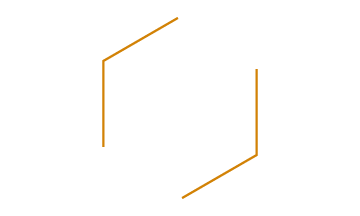Supplemental Material
Author Note
The authors are listed in alphabetical order. Julian House was responsible for the data analysis and interpretation; Nina Mazar was the research project lead (The findings and views expressed in this paper do not necessarily represent those of the World Bank or its Executive Directors). The research was conducted while Elizabeth Hardy was a manager in the Behavioural Insights Unit of the Government of Ontario (from 2013 to 2015). The research was supported by a TD Bank Group Research Fund awarded to BEAR.
Author Affiliation
Castelo, Columbia Business School, Columbia University; Hardy, Central Innovation Hub, Government of Canada; House, Behavioural Insights Unit (BIU), Government of Ontario, and Behavioural Economics in Action research hub (BEAR) at Rotman School of Management, University of Toronto; Mazar, BEAR, Rotman School of Management, University of Toronto, and Global INsights Initiative (GINI), World Bank; and Tsai and Zhao, BEAR, Rotman School of Management, University of Toronto. Corresponding authors’ e-mail addresses: [email protected] and [email protected].
References
1. Enright, A. (2015). U.S. annual e-retail sales surpass $300 billion for the first time. Retrieved from Internet Retailer website: https://www.internetretailer.com/2015/02/17/us-annual-e-retail-sales-surpass-300-billion-first-ti
2. Jordan, M., Belmonte, D., Fowell, L. H., Tanaka, D., & Wagner, J. (2012). Next generation of eservices: Enhancing service delivery in the Canadian public sector. Retrieved from PwC website: http://www.pwc.com/en_GX/gx/psrc/pdf/citizen-compass.pdf
3. Soman, D. (2015). The last mile: Creating social and economic value from behavioral insights. Toronto, Ontario, Canada: University of Toronto Press.
4. Thaler, R., & Benartzi, S. (2004). Save More TomorrowTM: Using behavioral economics to increase employee saving. Journal of Political Economy, 112(Suppl. S1), S164–S187.
5. Bendapudi, N., Singh, S. N., & Bendapudi, V. (1996). Enhancing helping behavior: An integrative framework for promotion planning. Journal of Marketing, 60(3), 33–49.
6. House of Lords. (2011). Behavior change report. Retrieved from http://www.parliament.uk/business/committees/committees-a-z/lords-select/science-and-technology-committee/news/behaviour-change-published
7. Ly, K., & Soman, D. (2013). Nudging around the world. Retrieved from University of Toronto, Rotman School of Management website: http://cd-www.rotman.utoronto.ca/-/media/Files/Programs-and-Areas/behavioural-economics/Nudging%20Around%20The%20World_Sep2013.pdf
8. Thaler, R., & Sunstein, C. (2008). Nudge: Improving decisions about health, wealth, and happiness. New Haven, CT: Yale University Press.
9. Dinner, I., Johnson, E. J., Goldstein, D. G., & Liu, K. (2011). Partitioning default effects: Why people choose not to choose. Journal of Experimental Psychology: Applied, 17, 332–341.
10. Kahneman, D., Knetsch, J. L., & Thaler, R. H. (1990). Experimental tests of the endowment effect and the Coase theorem. Journal of Political Economy, 98, 1325–1348. http://doi.org/10.1086/261737
11. Kahneman, D., Knetsch, J. L., & Thaler, R. H. (1991). Anomalies: The endowment effect, loss aversion, and status quo bias. Journal of Economic Perspectives, 5(1), 193–206. http://doi.org/10.1257/jep.5.1.193
12. Johnson, E. J., & Goldstein, D. (2003, November 21). Do defaults save lives? Science, 302, 1338–1339. http://doi.org/10.1126/science.1091721
13. Madrian, B. C., & Shea, D. F. (2001). The power of suggestion: Inertia in 401(k) participation and savings behavior. The Quarterly Journal of Economics, 116, 1149–1187.
14. UK Cabinet Office Behavioural Insights Team. (2012). Applying behavioural insights to reduce fraud, error and debt. Retrieved from https://www.gov.uk/government/uploads/system/uploads/attachment_data/file/%20%2060539/BIT_FraudErrorDebt_accessible.pdf
15. Hallsworth, M., List, J., Metcalfe, R., & Vlaev, I. (2014). The behavioralist as tax collector: Using natural field experiments to enhance tax compliance (NBER Working Paper 20007). Retrieved from National Bureau of Economic Research website: http://www.nber.org/papers/w20007
16. Shu, L. L., Mazar, N., Gino, F., Ariely, D., & Bazerman, M. H. (2012). Signing at the beginning makes ethics salient and decreases dishonest self-reports in comparison to signing at the end. Proceedings of the National Academy of Sciences, USA, 109, 15197–15200. http://doi.org/10.1073/pnas.1209746109
17. Zhao, M., Lee, L., & Soman, D. (2012). Crossing the virtual boundary: The effect of task-irrelevant environmental cues on task implementation. Psychological Science, 23, 1200–1207. http://doi.org/10.1177/0956797612441608
18. Alba, J. W., & Chattopadhyay, A. (1986). Salience effects in brand recall. Journal of Marketing Research, 23, 363–369.
19. Taylor, S. E., & Thompson, S. C. (1982). Stalking the elusive “vividness” effect. Psychological Review, 89, 155–181.
20. Kahneman, D. (2011). Thinking, fast and slow. New York, NY: Farrar, Straus and Giroux.
21. Zhao, M., Hoeffler, S., & Zauberman, G. (2007). Mental simulation and preference consistency over time: The role of process- versus outcome-focused thoughts. Journal of Marketing Research, 44, 379–388.
22. Anderson, M. C., & Neely, J. H. (1996). Interference and inhibition in memory retrieval. In E. Bjork & R. Bjork (Eds.), Memory handbook of perception and cognition (pp. 237–313). San Diego, CA: Academic Press.
23. Hoch, S. J. (1984). Availability and interference in predictive judgment. Journal of Experimental Psychology: Learning, Memory, and Cognition, 10, 649–662.
24. Johnson, E. J., Häubl, G., & Keinan, A. (2007). Aspects of endowment: A query theory of value construction. Journal of Experimental Psychology: Learning, Memory, and Cognition, 33, 461–474. http://doi.org/10.1037/0278-7393.33.3.461
25. Kahneman, D., & Tversky, A. (1979). Prospect theory: An analysis of decision under risk. Econometrica, 47, 263–292.
26. Johnson, E. J., Shu, S. B., Dellaert, B. G. C., Fox, C., Goldstein, D. G., Häubl, G., . . . Weber, E. U. (2012). Beyond nudges: Tools of a choice architecture. Marketing Letters, 23, 487–504. http://doi.org/10.1007/s11002-012-9186-1
27. Social and Behavioral Sciences Team. (2015). Annual report. Retrieved from White House website: https://www.whitehouse.gov/sites/default/files/microsites/ostp/sbst_2015_annual_report_final_9_14_15.pdf
28. Haynes, L., Service, O., Goldacre, B., & Torgerson, D. (2012). Test, learn, adapt: Developing public policy with randomised controlled trials. Retrieved from United Kingdom Cabinet Office website: https://www.gov.uk/government/uploads/system/uploads/attachment_data/file/62529/TLA-1906126.pdf
29. Leclerc, F., Schmitt, B. H., & Dubé, L. (1995). Waiting time and decision making: Is time like money? Journal of Consumer Research, 22, 110–119.
30. Carter, L., & Bélanger, F. (2005). The utilization of e-government services: Citizen trust, innovation and acceptance factors. Information Systems Journal, 15, 5–25.
31. Forsythe, S. M., & Shi, B. (2003). Consumer patronage and risk perceptions in Internet shopping. Journal of Business Research, 56, 867–875.
